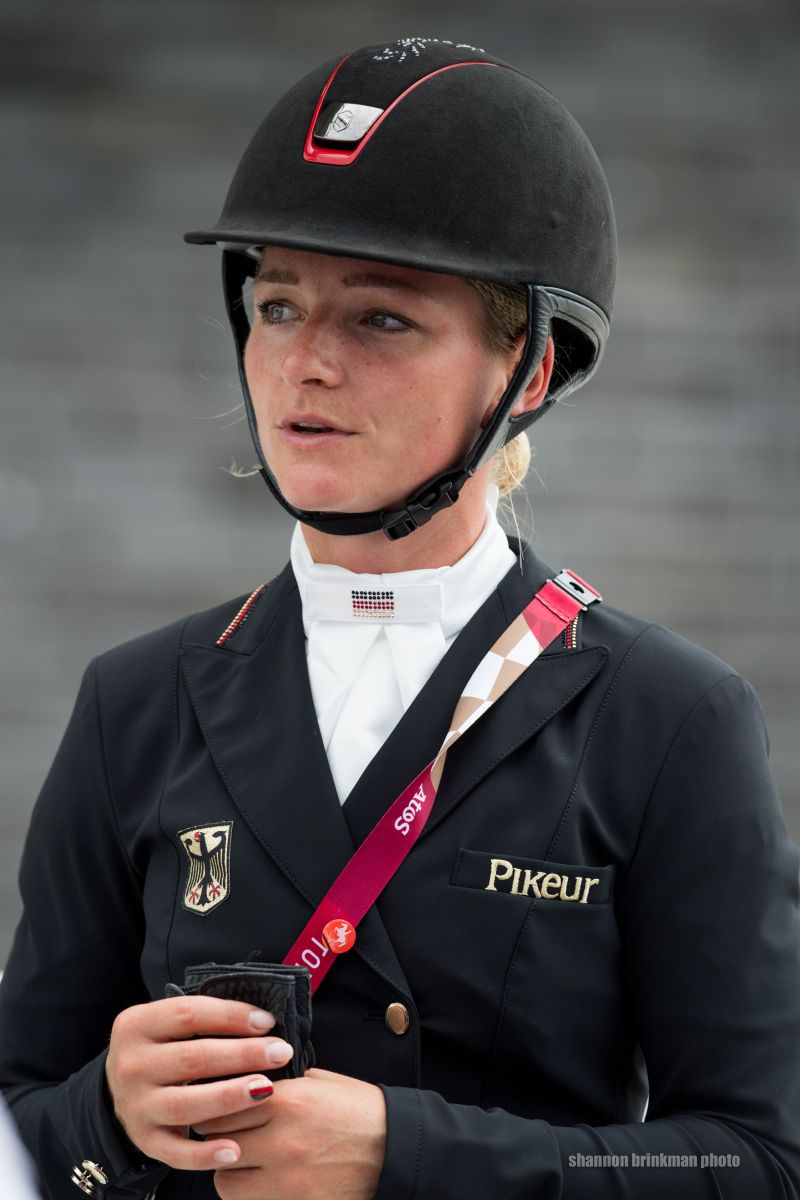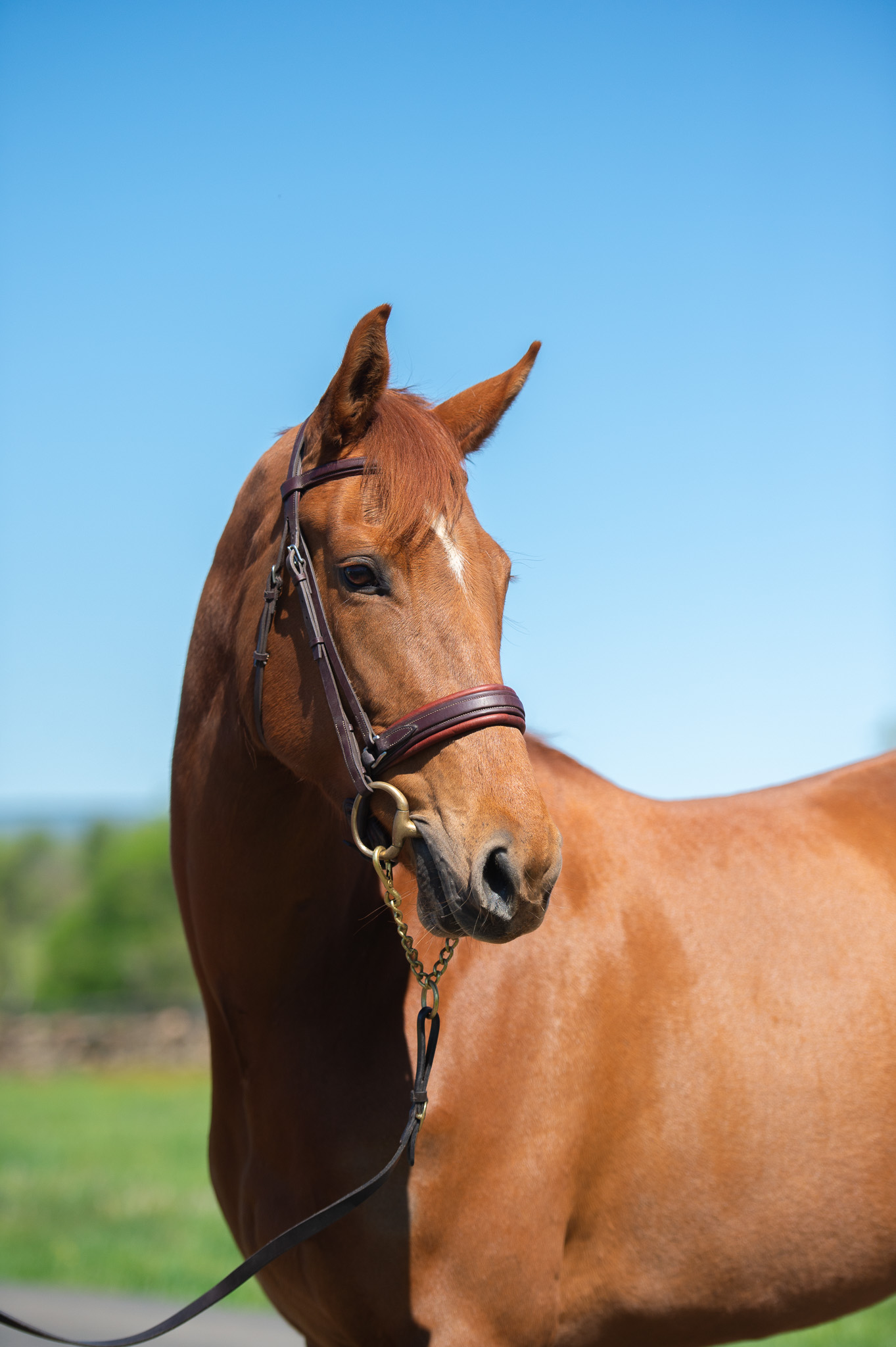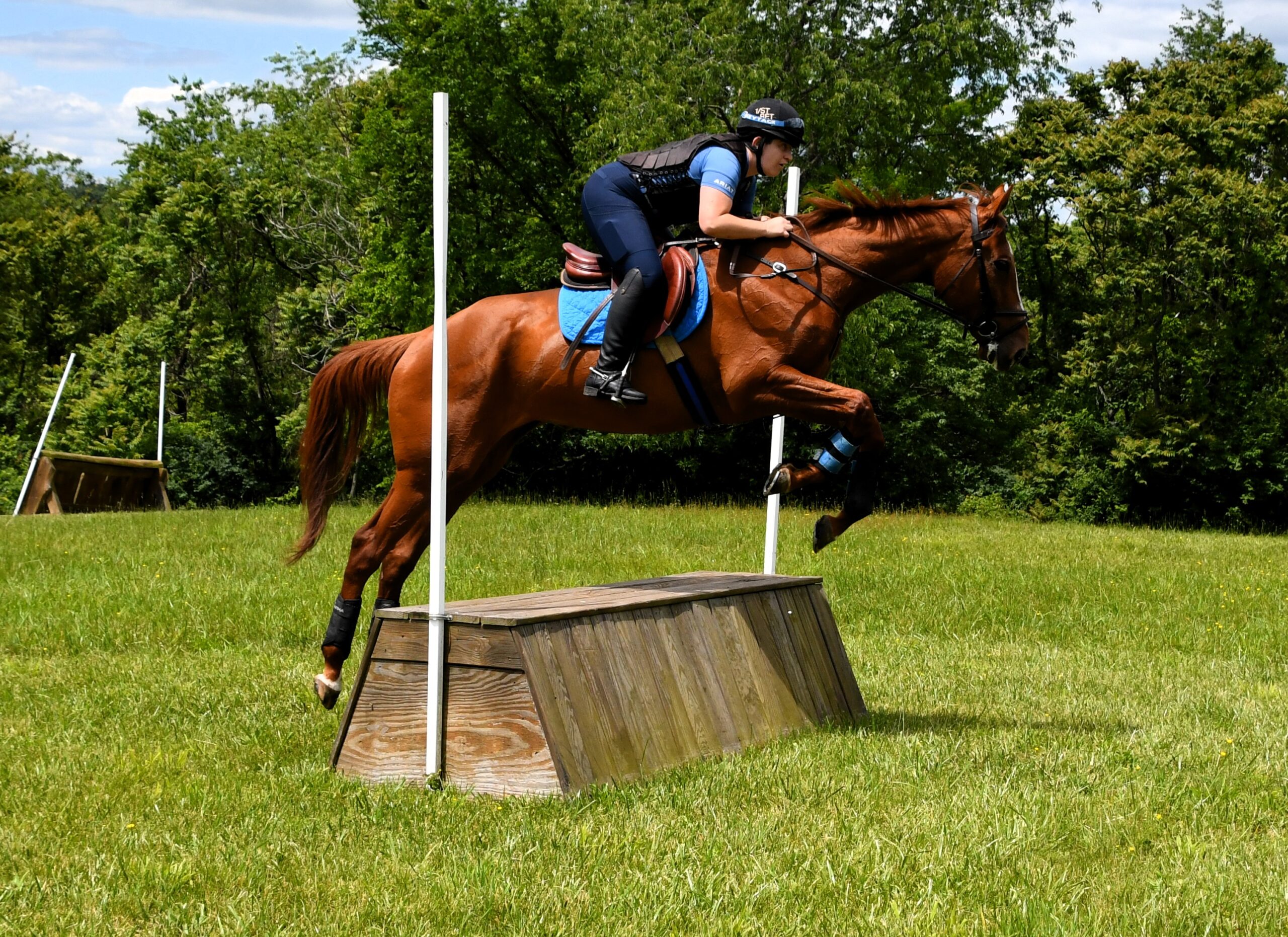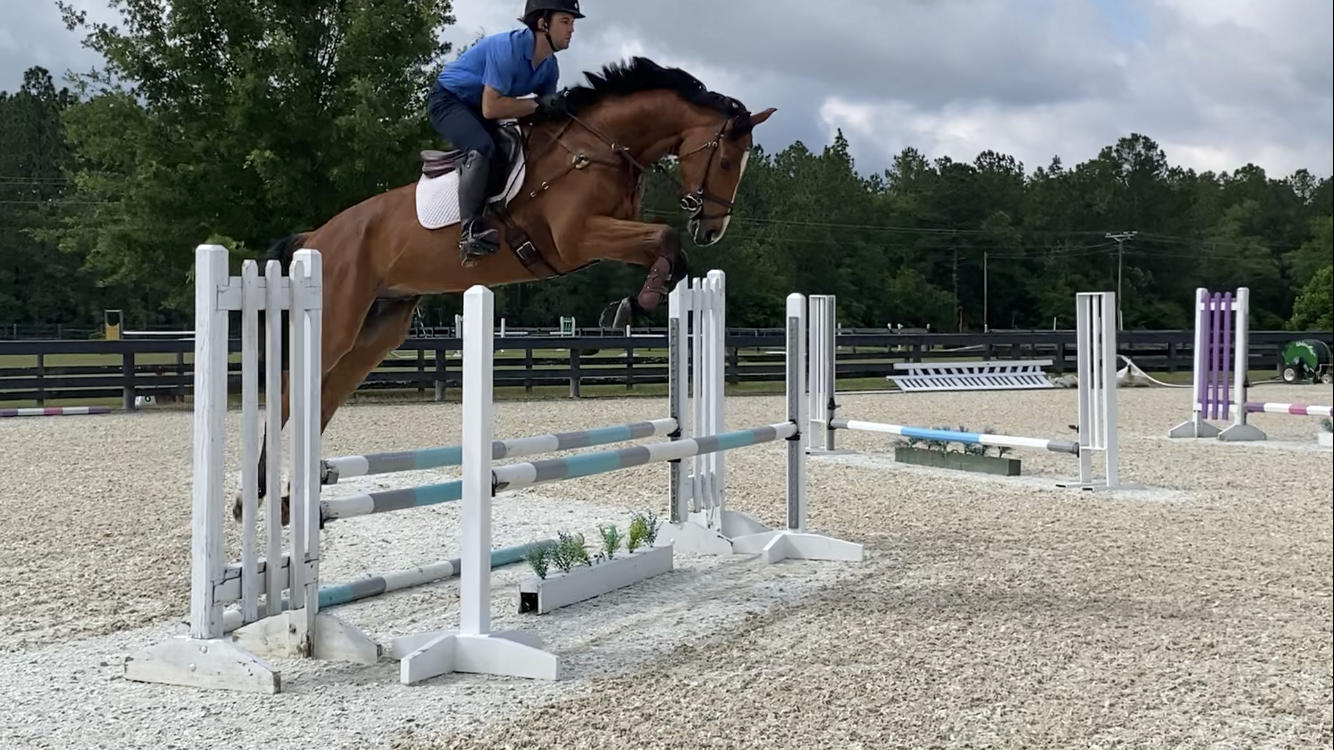It’s nearly time to kick things off for the cross country portion of competition at the Tokyo Olympics, and we’ve been busy gathering thoughts on Derek di Grazia’s twisting and turning track from the riders. The general consensus is that the optimum time of 7 minutes, 45 seconds will be very difficult to catch – even Derek himself says he expects to see maybe three or four riders manage a clear round inside the time. We’ll find out how the course will ride tomorrow (this evening for those of you in the States), but it’s safe to say that this is not shaping up to be a dressage competition.
You can see some more analysis of the track from CrossCountryApp here. Keep reading to see how riders are thinking of and planning for the task at hand.
Tokyo 2020 Olympics: Website, EN’s Ultimate Guide to Tokyo 2020, Latest News, Live Scores , XC Start Order, EN Olympic Digest Newsletter Signup, Live Stream Guide, EN’s Instagram, EN’s Twitter

Michael Jung and Chipmunk FRH. Photo by Shannon Brinkman Photography.
Michael Jung and Chipmunk FRH – Germany (1st on 21.1)
“[Chipmunk FRH is] a very powerful horse but he’s very nice to ride. I think this helps a lot, that you need not too much preparation before the fence. I think the time is very tough tomorrow so you need a very good communication with your horse. Still, in the end they have to listen every well, you have to be very focused and concentrate – that’s very important.”
Germany’s drawn order puts them second-to-last out of the box.
“We have a very good start position, our first rider is number 14, so before [Julia Krajewski] goes some nice information will have come through which we can use. You need a lot of luck with the weather and other things you can’t control, but definitely it’s good if you start towards the end.”

Photo by Shannon Brinkman Photography.
Oliver Townend and Ballaghmor Class – Great Britain (2nd on 23.6)
“It’s very intense. You’re always on the climb or the camber or in the water or in a combination and, you know, it’s a very intense four-and-a-half star long. The questions are extremely fair; it’s very horse friendly, and if you took each fence individually there wouldn’t be too many problems – but at the same time when you add the heat, the terrain, the Olympic pressure, and then speed on top of that, it’s going to be causing a lot of trouble and it’s going to be very difficult to get the time.”
“[Course designer Derek di Grazia is] a horseman to start with, which is a very nice start to being a course designer. I think he’s a very special course designer; a very special, talented man at the job. For me, this is very different to Kentucky – but at the same time it still has the feel that he wants the horse to see where they’re going. There’s no tricks out there, which you can get quite a lot in the modern day sport with people trying to catch horses [out]. Derek doesn’t try to catch horses – he builds very seeable questions and then lets the terrains and the speed do the job for him.”

Doug Payne and Vandiver – United States (30th on 33)
“I think it’s excellent. I think Derek does an incredibly good job in presenting questions that certainly could catch you out or could create problems, but I think in the end the key it’s a super fair course for the horses. There’s some designers out there that come around a blind turn to a trick or something that honestly would just catch horses out if the rider isn’t quite right. And I think if the rider’s not quite right here, the result is probably a runout of whatever it might be, but they have a really good shot to try and assess what’s being asked early enough that they’re able to do something about it.”
Doug will come forward as trailblazer for the US team:
“I actually chose to go first. Quinn is very good on cross country – he’s quick, efficient, good on his feet but he’s also a little bit unconventional; he sort of drops, he tends to sort of land and stab the ground real quick, so in the end watching a whole lot of people doesn’t necessarily add as much value for me riding him than it would for some of the others riding a more conventional type of horse, I guess.”
“We’re very lucky, I think, having prepped now at the Tryon facility. We show there quite a bit and to me, [this course] feels a lot like that. It’s sort of up and turn, and back and turn, and whatever. I think that’s a bit of an advantage that we’ve seen that at as many shows as we have, and I think that on those types of courses, it benefits the horses if the riders can figure out a way to make it easy on them. Pick a line that makes it flowing and you don’t have to interfere as much because this [course], I imagine, could look erratic and sharp and sort of, you know, jump and turn and whatever. I think you could make it a smooth and flowing thing.”
The course features a number of alternative routes that take horses around the outside line of a combination complex, rather than forcing them to turn back on themselves and add extra exertion in the tough conditions.
“There’s a number of options in line that you can choose that honestly are about the same distance, like one of those turn arounds with the two little half roll-tops – like if you go outside or on the inside, I think in the end from start to finish it’s probably the same timeline. And actually, I think it’s the third water where you sort of drop in, turn to the house, I think it’s kind either way. It works out well. I think the first and last minute are tough to make any sort of time up. In the middle, you can certainly pick and choose, but I think there are a couple spots in the middle that if you want to be close to the time you’re gonna have to be moving there. I think he’s done as well as he can with the chunk of land he has available to him. I think he’s incredibly good with utilizing and placing the questions of the turns to make it as flowing as he can.”

Boyd Martin and Tsetserleg TSF – United States (20th on 31.1)
“Thomas is a great galloper – he’s got stamina and speed. He’ll be a little bit tricky early on, just because he gets brave and a bit aggressive, so I’ve just got to sort of try and nurse him through the first minute or so, and then he’s got just tremendous heart. I’ve never experienced a horse that digs deep so much. I think he’ll have plenty of juice left by the end, so I’m going to give it my all.”
Boyd will ride as the team anchor, which means he’ll go last for the US.
“I think it’s an advantage being able to watch and see how it’s riding. Sometimes, not knowing how it’s riding works better as well. I’ll get a bit of feedback from Doug and fill up and I’ll sit back and drink a cup of tea and watch the first half of the field go. Usually the jumps that you walk that you think are real difficult ride really well, and then there’s one or two jumps that you think it’d be smooth sailing, which cause chaos – so the advantage of going late is knowing that. The horses all read the jumps about the same, so I’ve just got to stay calm and ride him well and it should go well.”

Phillip Dutton and Z – United States (16th on 30.5)
“I hope [this track will suit Z] well. It’s certainly a lot to negotiate, as in turning and twisting and getting away from the jumps, and then there are some gallop sections, but then there’s other areas where there’s a lot to do. So I’m going to try to spend tomorrow really getting to know the course well so that I can shave off every second that I can and figure out how close I can get to the jumps before I need to steady up. I think it is a course that you have to understand and be thinking ahead before the next combination comes up so you really know where to go. A lot of the bigger [tracks] are bit more open and a little bit more galloping and you can see the jumps a lot more, and where you’re going, whereas this track is not like that at all.”

Tim Price and Vitali – New Zealand (5th on 25.6)
“You just never know with this sport where the difficulties will come. So we can predict that the course is going to be big and difficult in terms of big fences, and the time is going to be tight, which puts everyone under a bit more pressure. But it feels like it’s a three-phase competition to us, and sometimes you think the Olympics might not quite get that right, but this feels like –mainly because of the cross-country and what Derek’s done – it’s going to be a good competition for us all.”
“It will call for both thinking and very reactive riding, [which is] di Grazia’s trademark design I think. Time is going to be really tight, but it will make some amazing viewing and be like no other visual feast. It suits a good cross-country nation like the Kiwis – we are looking forward to getting out there and getting stuck in.”

Jesse Campbell runs through his safe words. Photo by Shannon Brinkman.
Jesse Campbell and Diachello – New Zealand (15th on 30.1)
“[Kentucky this year was a good prep], and that was one of the key reasons behind us going out there – you know, see what [Derek di Grazia] was up to; get a feel of what his design is. I wouldn’t say it’s similar actually at all. It sort of reminds me of Aachen, and that’s like one of the funnest tracks in the world to ride and it’s just, like, so fast. I think it’s gonna be the similar feeling on Sunday.”

Photo by Shannon Brinkman Photography.
Tom McEwen and Toledo de Kerser – Great Britain (12th on 28.9)
“I think they’ve created a great track. I mean, it looks like incredible. The grass is incredible. It’s beautifully presented, with lots of different questions, and it starts off very early. And obviously, you’ve got the terrain added in there. Lots of short, sharp bursts, which isn’t that natural to our horses – we’re used to sort of the big, flowing hills. One [benefit Team GB] do have is with time: horses get a lot more stamina and endurance [with runs], and one thing we’ve got is three different five-star wins under our three different horses. So they’ve all proved that – but yeah, it’ll be a different test, and where you might get away with something early, you might have to make sure that you do then pay for it a little bit later on. So it’s just covering all the angles, and hopefully we can be as good as we can be.”

Alex Hua Tian and Don Geniro – China (3rd on 23.9)
“I think it’s a very, very cleverly designed balanced track, but I think it’s perfect for this championship. The time is going to be really tight, and I think it’s going to put a lot of pressure on the traditional nations going quickly. And I think going quickly around that track, it’s intense enough that some of these superstar combinations might well make a mistake in the heat of the moment. But there are enough long ways round that are not actually too time-consuming and not too tiring, I think, for the greener nations like us to take and have a safe strategy for the team cross-country plan.”
Alex will be the pathfinder for China’s first-ever Olympic eventing team.
“There are a couple of things that sort of worked well in my favor and also for the team. The forecast for Sunday is hit and miss; it was going to be very hot, now it might be raining. Don isn’t the most blood animal in the world — he was always going to find the heat hard, especially with that level of intensity of course — and so I think for me personally, I really didn’t want to go last. And I think with the possibility that it might still be very hot on Sunday it suits me to go first, and give them as much of a chance as possible. And the team – our other two team riders are great horseman, really good riders sat on damn good horses, but I think, hopefully, if I have a good ride it’ll give them the confidence to go out there and attack it.”

Julia Krajewski and Amande de B’Neville – Germany (4th on 25.2)
“It’s worthy of an Olympic course, I think – very fair yet with a enough to jump. I’m happy I’m sitting on a really good jumper. [It’s] technical, and certainly time will be difficult to get. I think I’m looking forward to it because she’s so cool to ride.”
“[There are] quite a few combinations really. We’ve got four water fences, I think? Many, anyway! And quite a few downhill combination. But there’s nothing really that I would say well, that’s the one thing which you have to make and then you’re almost through –it’s many questions throughout the course. Surely the last combination will be quite something after all the course is almost behind you.”
Julia will ride as pathfinder for Team Germany, who are the 14th team of 15 in the drawn order.
“With only having three [scores], you don’t have this drop score anymore where someone can do not-so-good and the others can make up for it, so we all have to really perform, and that’s fine for me. I’m not that early, and it’s maybe quite good: I can watch a couple of cross-country [rounds], and then someone has to start from the team!”

Photo by Shannon Brinkman Photography.
Sam Watson and Flamenco – Ireland (38th on 34.3)
“I think it’s clever, you know – you walk it and you go, ‘that’s a very fair course’. You’ve got to remember what the format is: the team that makes the least mistakes wins medals here. And [Derek has] given us plenty of opportunity to make mistakes. He’s been very clever – there’s not many one-stride distances at all, and very few two-stride distances. So there’s not many fences where you can just jump in and then momentum takes you through – you’ve got to jump in, and you’ve got to either hold your line or you’ve got to attack the line. You’ve got to make choices on the course in the fences. When you’re doing that over a lot of combinations, I think you could find people sometimes make the wrong decision and get into trouble.”
“[It should suit Flamenco well] because he’s clever – he’s kind of like a pony in many ways, but he’s a big horse, and he’s got a big stride. So you always have options, and he’s got great footwork, which you need if I do something wrong. But he’ll be listening and paying attention and I’ll go out there and I’ll be pretty attacking, because I think that suits him. And I think you can do that on the course.”
“[There are] places where you could be conservative, and you could take quieter distances if you wanted to. But I think I’ll be quite positive on him, to be honest, and try and stay as close to that starting score as I can. I wanted to be [on a better score], but it was better than what I started on at WEG, and we went on to medal there. I’ll probably go out of the start box knowing the plan A and plan B are there. I think he’s just given us decisions everywhere. The last water’s got plenty jumping in it as well; you want to have a lot of horse left.”

Lauren Billys (Puerto Rico) and Castle Larchfield Purdy. Photo by Shannon Brinkman Photography.
Lauren Billys and Castle Larchfield Purdy – Puerto Rico (54th on 39.9)
Lauren trains with Derek, and so she tackles her courses with his riding and training philosophies in mind.
“I tried really focusing when I walk the course, thinking what Derek would say. I think there is a misconception that when we train together, that we’re in this amazing cross-country field – but we ride in an arena no bigger than a short court when I go to his house. So it’s really all about your lines, and I think that is the truth when you go out there. I think I know what he’s going to do, but I don’t really know what he’s going to do. But I think he’s a fair course designer, and he’s a horseman, and so I trust that a lot – and I know what he’s told me to do since I was 18 years old in terms of how to ride, so I suspect that if I do what he says, I should have the tools to negotiate the questions out there.”
“Sometimes I can see stuff that he’s classically always had me do in exercises. Like, for example, we always jump on a circle. It’s always three jumps on a turn on a circle where you can’t count your strides and you have to give and you have to let the horse work their feet. That happens a lot out there. The other thing that he has is always a big question to a corner or an accuracy question – that’s quite common. And in his courses, most recently, we’ve seen those big drop down banks, where you just have to let the horse negotiate and work their feet. I see a lot of what he teaches and preaches out there.”

Colleen Loach and Qorry Blue D’Argouges. Photo by Shannon Brinkman Photography.
Colleen Loach and Qorry Blue D’Argouges – Canada (42nd on 35.6)
“I think that Derek has done a great job on that piece of land to have some galloping spaces. I think that the last water will cause some problems – the horses will be a bit tired at that point, and I think it’s a bit of a question. The coffin as well. There’s a lot of challenges out there, but I’m looking forward to meeting them.”
“I think it does [suit Qorry’s style] because he’s not a fast horse, he’s a super ridable horse, so I won’t really have to change his pace much going into the turns and the combinations. So if he’s feeling like his normal self it should be a great course for him and he should crack around.”

Japan’s Kazuma Tomoto takes his turn in the socially-distanced mixed zone. Photo by Shannon Brinkmann.
Kazuma Tomoto and Vinci de la Vigne – Japan (7th on 25.9)
“It’s not huge fences, massive, but [there are] still so many options we’ve got, so it’s more [that it’s] complicating everything. We have to decide which way we want to go. Vinci de la Vigne’s a really good cross country horse so I can trust him, 100%.”

Arinadtha Chavatanont (Thailand) and Boleybawn Prince. Photo by Shannon Brinkman Photography.
Arinadtha Chavatanont and Boleybawn Prince – Thailand (57th on 42.4)
Arinadtha will ride as the day’s trailblazer, as well as the team Thailand trailblazer. With no reserve combination on the Thai team, all three riders are under particular pressure to complete. Arinadtha has only been able to ride cross-country twice in the lead-up to Tokyo.
“I know my horse is quite strong on cross-country, but since I haven’t been doing the cross-country for one-and-a-half years – I did it two times before I came here – I cannot be really, really confident. So of course it’s the big Games, and something can happen any time. Don’t be over-confident. I think I need to really take it fence by fence, like playing a game – there’s 23 fences, one by one by one by one. [I need to] try to make sure I ride according to my plan, since I’m the first one out and I really have no one to look for – so I need to be careful in the decision I take and sleep well, eat bananas, and everything will be fine.”

Vittoria Panizzon and Super Cillious. Photo by Sally Spickard.
Vittoria Pannizon and Super Cillious – Italy (52nd on 38.6)
“It perhaps wouldn’t be the biggest course many here have done, but the situation will make it far more challenging than it could look at first. It’s very hard to get your bearings because it’s so twisty, and the warm-up is in a very different area to the course, so I just hope the horses are clear of where they’re going and what they’re doing. I think the horse needs to have a lot of trust in the rider because they’re not always going to be sure of where they’re going, or what’s happening.”
“The warm-up is down at the bottom of the hill and it’s rather small, and then you go right up to the top of the hill and set off, so they won’t have seen what’s going on or what environment they’re in. It’s going to be a bit of a surprise when you suddenly set off, and you even set off uphill so all you can see when you get up there is the start.”

Photo by Shannon Brinkman Photography.
Andrew Hoy and Vassily de Lassos – Australia (13th on 29.6)
“I think it’s a very good course. The ground is fantastic; the fences are beautiful. Like every Olympic Games, the presentation you cannot question. It’s a proper challenge – and I don’t mean just with the height of the fences, but the layout of the course, the flow of the course — there is definitely a flow to the course — but it’s going to be a challenge to get the time. I’m sitting on one of the great cross-country horses in the world, and we’ve got a wonderful relationship. I believe it’s achievable, but time will tell.”






















